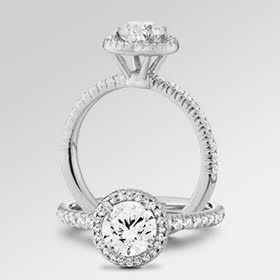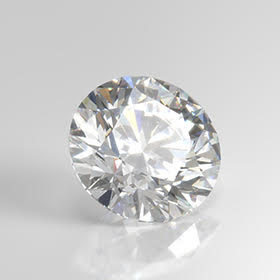Despite the similarities between the two diamonds, their distinctions matter. Although diamonds dominate the engagement ring market, many other gemstone options are available. In addition, several options are available if you prefer something different, including stones resembling diamonds, such as moissanite.
According to Don O'Connell, president, and chief executive officer of Edward & Colvard, the company that invented moissanite, obsidian is a natural substance called silicon carbide. However, silicon carbide is extremely rare and cannot be found in nature in large quantities, so it can be cut into even yet another gemstone. For this reason, unlike natural gems, companies are interested in fine jewelry produced in a laboratory.
What is a Moissanite Stone?
Henri Moissan, a French scientist who went on to win the Chemistry Nobel Prize, made the initial discovery of it in 1893. In Arizona, he found minuscule fragments of a diamond which would later bear its name in a crater left by a meteor that crashed on Earth. Although he eventually realized that the diamonds were made of silicon carbide, he initially believed that he had found diamonds.
Due to its extreme rarity, all of the moissanite that is now on the market was produced in a laboratory. The particles Moissan found were successfully synthesized to create one of the most brilliant gemstone in the world after several years of experimentation and failure.
The material known as moissanite, often known as a “diamond simulant,” is designed to resemble diamonds optically yet differs significantly from them chemically and aesthetically. The two diamonds differ significantly in toughness, brilliance, and color. The fact that diamonds and moissanites are excellent thermal conductors is one thing they have in common.
They are produced in controlled conditions using cutting-edge technology. Thus mining is not at all necessary to make moissanites. Thus, it is simple to determine where they came from. Lab-produced Diamonds Moissanite has a lower carbon footprint and less negative impact on the environment than wild gemstones.
Moissanite vs. Diamonds
Price
Moissanite vs. Diamonds is the most common thought in buyers' minds. The cost of moissanite is perhaps its greatest advantage over diamonds, as it is much less expensive. The price of a morganite gem is roughly one-tenth that of a mined stone of equivalent size and grade. In addition, larger carat weights increase the value of moissanite stone.
Durability
Diamonds are renowned for being strong. They can survive nearly any form of wear and tear and are the toughest naturally occurring mineral. Nevertheless, they are not impenetrable; diamonds can still crack or chip despite being the hardest stone known to man. They are still great for daily use, particularly for a wedding ring. Diamonds have a great degree of hardness. Thus they will be far more resistant to abrasions.
Brilliance
Their brilliance is the primary distinction between moissanite and diamonds. Generally speaking, moissanite can shine brighter than a diamond. It sparkles more than any other diamond because it has greater fire and brilliance.
Color
Diamonds and moissanites can both be colorless or include some color. Masonite stone has historically had a yellow or greenish color. However, producers have improved the production method over time. Thus you can now get excellent moissanite that is colorless.
https://www.youtube.com/watch?v=xef4sknY2Lg
However, the hue of a diamond can differ substantially. Diamond color is rated on a scale of D-Z, with D becoming colorless and Z being a gentle yellow or brown. As a result, the hue of a diamond can range from colorless to yellow, pinkish, blue, emerald, red, or brown.
Shopping consideration
Moissanite stone is similar to any other gem, but there are a few considerations to make. The most crucial thing to remember is that you may purchase high-quality Moissanite for a fair price, so avoid settling for a stone with obvious clarity or color flaws. Also, despite the possibility of inclusions in moissanite, eye-clean stones should be available.










